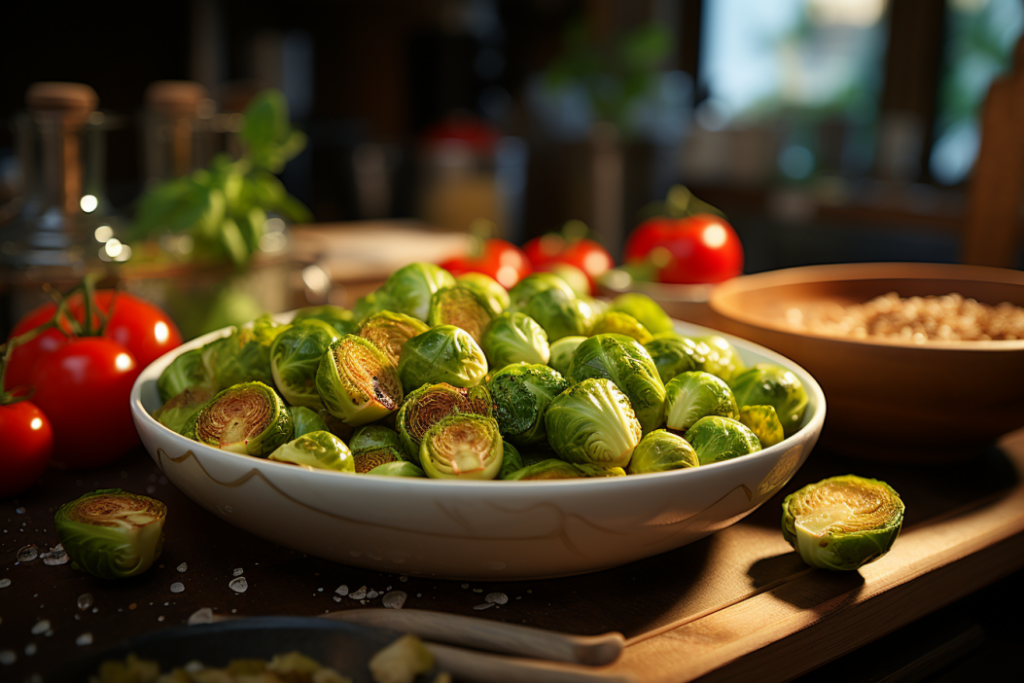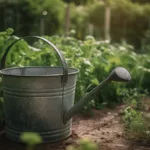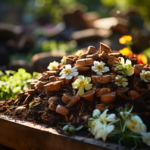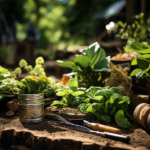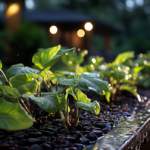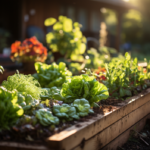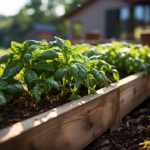Table of Contents
Discover the Best Techniques, Tips, and Tricks for Harvesting a Bumper Crop of Brussels Sprouts in Your Backyard Garden
Growing Brussels sprouts in your own garden might sound intimidating, but it’s easier than you might think! Plus, homegrown brussels sprouts are tastier and more nutritious than the store-bought varieties. Brussels sprouts require a longer growing season, but the result is well worth the wait. They’re packed with vitamins C and K, fiber, and even protein. By growing them yourself, you can save money and reduce your carbon footprint by avoiding the transportation costs of store-bought produce. With a little patience and attention, you can soon harvest a plentiful crop of Brussels sprouts that is sure to impress your family and friends. Read on to find out how!
Choosing the Right Variety for Your Garden
Before you start planting Brussels sprouts in your garden, it’s essential to understand that there are several varieties to choose from. Each type has its unique characteristics, including different maturation times, yields, and flavors.
Here are some of the commonly grown Brussels sprouts varieties:
- Catskill: This classic variety produces large, uniform sprouts and matures relatively early, ready for harvesting in approximately 90 days.
- Diablo: This variety is known for its purple stem and dark green foliage, making it a visually attractive addition to your garden. It also has a high yield, producing medium-sized sprouts ready for harvesting within 100 days.
- Falstaff: A relatively new hybrid variety, the Falstaff produces uniform, compact sprouts with a sweet flavor that’s less bitter than other types. It’s ready for harvesting in approximately 110 days.
- Long Island: This variety produces slow maturing, medium to large-sized sprouts, but the flavor is among the sweetest compared to other types.
- Rubine: This variety produces beautiful purple to red leaves with pink sprouts, adding color to your garden. The Rubine matures in approximately 100 days.
When choosing the right variety for your garden, consider the size of your garden, the climate, and your harvesting needs. Some varieties, like Catskill and Diablo, mature early and are ideal for colder climates, while others, like Falstaff and Long Island, are good choices for drier and warmer climates.
Select a variety that suits your taste preference and the harvest time-frame you have in mind. Start with a few plants and gradually add more as you become more experienced in growing Brussels sprouts.
Preparing the Soil for Ideal Growing Conditions
One of the most important steps in growing healthy brussels sprouts is preparing the soil before you start planting. Properly prepped soil will ensure healthy and vigorous plants. Here are some key aspects to consider when preparing the soil for optimal growing conditions.
Test the Soil
Start by testing your soil. By doing this, you’ll have a better understanding of the various nutrient levels in it, and more importantly, if it’s suitable for growing brussels sprouts. Most plants, including brussels sprouts, prefer soil with a pH level between 6.0 and 7.5. You can purchase a soil testing kit at your local garden center.
Fertilize
Once you know the nutrient levels in your soil, consider fertilizing to replace any deficiencies and provide sufficient nutrients for healthy plant growth. The best time to add fertilizer is before planting. Brussels sprouts need adequate supplies of nitrogen, potassium, and phosphorus. A well-balanced organic fertilizer with an NPK ratio of 2-3-2 is a great choice.
Other soil amendments
It’s always a good idea to mix in organic matter like compost or aged manure before planting. Organic amendments can help improve soil structure, providing better drainage, aeration, and lower soil bulk density. Consider adding a layer of mulch on top of the soil to help maintain moisture and suppress weeds.
Till the Soil
When the soil is ready, you’ll need to till it to aerate it and break up any clumps. Tilling will also help mix in organic matter and fertilizer.
In summary, prepping the soil properly is critical for growing brussels sprouts successfully. Ensuring ideal growing conditions of your plants will provide you with a hearty yield come harvest time. So, perform a soil test, fertilize, amend your soil, and till it before planting brussels sprouts.
Planting and Maintaining Your Brussels Sprouts
You’ve chosen the perfect variety of Brussels sprouts and you’ve prepared your soil for optimal growth. Now it’s time to get planting! Here are some tips for the planting and maintenance phases of your Brussels sprouts adventure.
Planting
- Timing is everything. Brussels sprouts should generally be started indoors about 6-8 weeks before the last frost of the season. They should be transplanted outside when they have developed 5-6 true leaves.
- Keep them spaced out. Brussels sprouts plants should be spaced around 2-3 feet apart to give them enough room to grow.
- Provide adequate support. As your plant grows taller, it’s important to provide support by either staking or using a tomato cage to prevent it from toppling over.
Maintaining
- Watering. Brussels sprouts require consistent moisture to grow properly, so it’s important to water regularly. However, be careful not to overwater—if the soil becomes too waterlogged, the plants may end up suffering from root rot.
- Fertilization. Brussels sprouts require lots of nutrients to grow, so it’s important to provide them with regular feedings of a well-balanced fertilizer to ensure they get the right amount.
- Pest control. Brussels sprouts plants are susceptible to a variety of pests such as cabbage aphids, flea beetles, and cabbage worms. Invest in some organic pest control methods to keep those pests at bay.
Growing Brussels sprouts in your home garden is a fun and rewarding experience that requires a little bit of planning, but nothing too complicated. By following these simple tips for planting and maintaining your Brussels sprouts, you can soon be on your way to harvesting a delicious and nutritious crop that you can enjoy all winter long.
Harvesting and Storing Your Homegrown Brussels Sprouts
After months of tending to your brussels sprouts plants, it’s finally time to harvest your crop. Brussels sprouts are ready to be harvested when the sprouts are 1-2″ in diameter, firm, and tightly closed.
Harvesting Your Brussels Sprouts
Here are some steps that you can follow to harvest your crop:
- Use a sharp knife or pruning shears to cut the sprouts off the stem, leaving a small piece of stem attached to each sprout.
- Start picking the lower sprouts first and work your way up. The lower sprouts mature earlier than the higher sprouts.
- Don’t wait too long to harvest, as overripe brussels sprouts will taste bitter.
Storing Your Brussels Sprouts
After harvesting, it’s time to store your Brussels sprouts so they will last for as long as possible. Follow these tips to keep them fresh:
- Remove any wilted or yellowed leaves, and rinse the sprouts in cool water.
- Store the sprouts in a plastic bag with a few holes poked in it or in a perforated plastic vegetable storage bag in the fridge’s crisper drawer.
- Brussels sprouts can last for up to 3 weeks in the fridge.
Additional Tips
Here are some additional tips to keep in mind when harvesting and storing your Brussels sprouts:
- Avoid washing the sprouts until you plan on using them, as extra moisture can cause them to spoil more quickly.
- If you have a large harvest, consider blanching and freezing your Brussels sprouts to preserve them for later use.
- If you’re not sure whether your Brussels sprouts are ready to harvest, give them a gentle squeeze. If they’re firm, they’re ready. If they’re soft or mushy, they’re overripe.
By following these measures and tips, you can ensure a plentiful harvest of delicious and nutritious Brussels sprouts that will last for weeks. Now it’s time to enjoy the fruits of your labor!
Conclusion
Congratulations, you’re now an expert on growing Brussels sprouts in your home garden! With these simple steps, you can grow your own delicious, nutritious, and eco-friendly crop. From deciding on the right variety to maintaining your plants, and finally harvesting your sprouts, you now have everything you need to become a master gardener. So why not give it a go? Not only do homegrown Brussels sprouts taste better than store-bought, but you’ll also be doing your bit for the environment and saving some money in the process. Happy planting!

